Suppose $f$ is a 2D random function defining a "random landscape", which is filled with water up to a level $h$. The water collects into random ponds, an interpretation I learned about from Ken Golden of the University of Utah [1].
Here is an illustration for $h=-1$.
blueblack = [.6 .6 1; 0 0 0]; CO = 'color'; h = -1; dom = [-2 2 -1 1]; f = randnfun2(0.3,dom); plot(f-h, 'zebra'), axis equal off, colormap(blueblack) title(['h = ' num2str(h)])
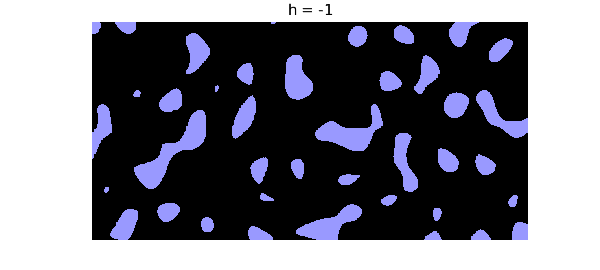
Of course, the mathematics depends on one's notion of a random function, and Chebfun makes a particular choice defined by certain random Fourier coefficients.
If $h$ is lower, the ponds are smaller and more separated.
h = -2; plot(f-h, 'zebra'), axis equal off, colormap(blueblack) title(['h = ' num2str(h)])
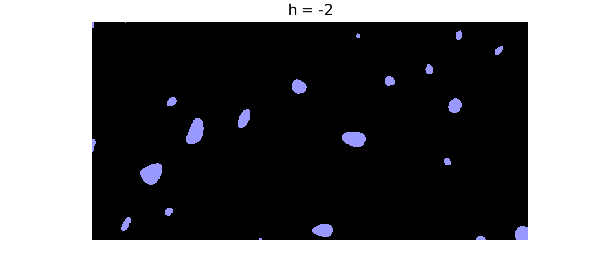
As $h$ gets bigger, the ponds grow and connect into a giant body of water. This is related to the subject of percolation theory.
for h = 0:2 plot(f-h, 'zebra'), axis equal off, colormap(blueblack) title(['h = ' num2str(h)]) snapnow end
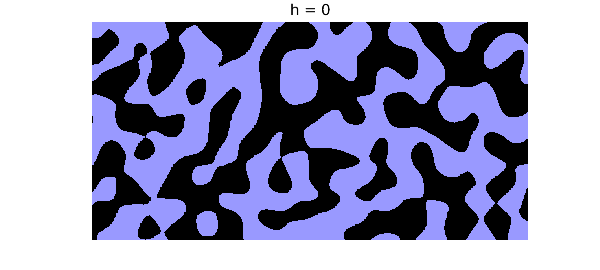
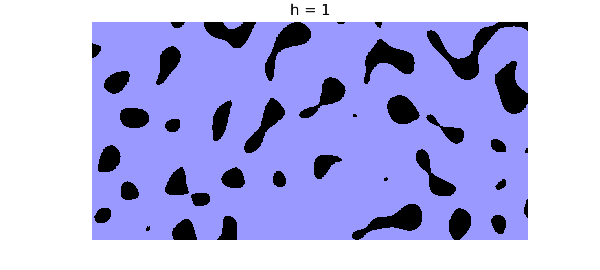
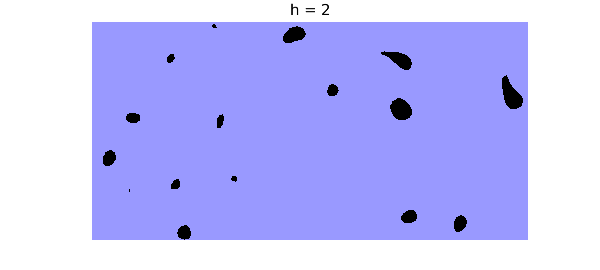
We can also let $h$ vary across the domain. The resulting image is reminiscent of an engraving by Escher.
dom = [-3 3 -1 1];
f = randnfun2(.1, dom);
h = chebfun2(@(x,y) x, dom);
plot(f-h, 'zebra'), axis equal off, colormap(blueblack)
title('varying h')
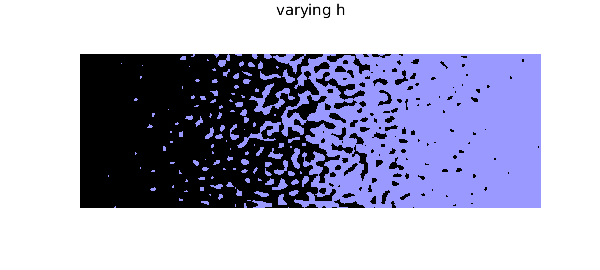
Reference:
[1] B. Bowen, C. Strong, and K. M. Golden, Modeling the fractal geometry of Arctic melt ponds using the level sets of random surfaces, Journal of Fractal Geometry, 5.2 (2018), 121--142.

